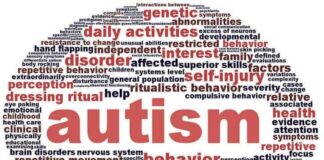If you visit the grocery or wellness section in supermarkets often, you should be familiar with the moringa plant. The moringa plant is one that has been known to have so many benefits to the health of humans. Moringa oleifera, popularly known as moringa, is a highly valued and versatile plant which belongs to the Moringaceae family. Ranging from offering relief from stomach disorders, to improving brain health and so on, the health benefits of moringa are quite amazing.
Having little knowledge about the moringa plant would leave you asking questions why the plant is beginning to grow much popularity as a ”superfood”. Well, the reason remains that it possesses a highly nutritious profile and powerful anti-inflammatory, antioxidant, and tissue-protective property among many other health benefits.

The benefits of moringa include the following:
Fights free radicals: Antioxidants aid in fighting free radicals, molecules that cause oxidative stress, cell damage, and inflammation. Moringa contains antioxidants called flavonoids, polyphenols, and ascorbic acid in the leaves, flowers, and seeds.
Fights Inflammation: Moringa reduces inflammation by suppressing inflammatory enzymes and proteins in the body. The moringa leaf concentrate can also significantly lower inflammation in the cells. These inflammations can lead to chronic diseases like diabetes, respiratory problems, cardiovascular disease, arthritis, and obesity.
Protects the liver: The extracts from the moringa plant exerts a hepato-protective effect on the liver. Research studies have validated the effectiveness of moringa leaves against the liver damage caused by anti-tubercular drugs as well as its stimulating effects in speeding up the recovery process. The high concentrations of polyphenols in its leaves and flowers aids in protecting the liver against oxidation, toxicity, and damage.
Treats Stomach Disorders: The isothiocyanates present in moringa are effective in the treatment of abdominal disorders such as constipation, gastritis and ulcerative colitis. Studies have shown that moringa extracts can be considered as an effective herbal alternative to a range of commercially available antacids and antihistamines.
Improves Brain Health: Due to its antioxidant and neuro-enhancer activities, moringa aids in improving brain health and cognitive function. It’s also been tested as a treatment for Alzheimer’s disease with favorable preliminary results. Its high content of vitamins E and C aids in fighting oxidation which leads to neuron degeneration, thus improving brain function.
Enhances Wound Healing: This amazing plant has blood-clotting properties in its leaves, roots, and seeds that benefit wound healing and can reduce clotting time, which means it reduces the time it takes for scratches, cuts, or wounds to stop bleeding.
![]()

The moringa powder can be added to your smoothie or drank as tea. The leaf powder was deemed safe in human studies, even in larger doses than normal. The powder has a mild flavor, so it makes for a light moringa tea with a slightly earthy taste.
Now you know, there’s quite a great number of nutritional and health properties that you can benefit from adding some moringa to your life. Just 1-2 teaspoons a day is all you need.
Don’t forget to share your experience with us if you are already adding Moringa powder to your healthy diet. We’d love to hear it!!! 🙂










Thank you for the exceptional effort you’ve put into curating such valuable content on this website. Your commitment to education is making a positive impact, and I’m truly grateful. It’s evident that the authors are experts in their respective fields, and their expertise shines through in every article. It’s a testament to their commitment to providing valuable information. Thanks! ID : CMT-O1C6LG2M1NQWITKIUI
Thank you for the exceptional effort you’ve put into curating such valuable content on this website. It has broadened my perspective and enriched my understanding. I’m grateful for the depth of knowledge it offers and the ease of access to valuable information. Thank you for sharing such valuable information and contributing to our growth. Thanks Mate! ID : CMT-ZIYOF0DZ81LXHT6K0C
Your article gave me a lot of inspiration, I hope you can explain your point of view in more detail, because I have some doubts, thank you.
Your article gave me a lot of inspiration, I hope you can explain your point of view in more detail, because I have some doubts, thank you.